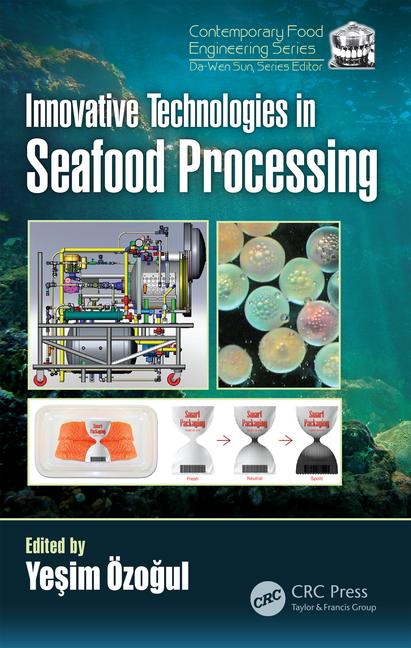Logistics Solutions: Cruise Control
Editor’s note: How are food processors optimizing
transportation? For one example, Refrigerated & Frozen Foods turned to
Chris Timmer, vice president of sales and marketing with LeanLogistics Inc.
Timmer and Gregory Bostick, a vice president at Pinnacle Foods Group, were
co-presenters for “Optimizing Transportation with Network Information,” a
speech at the Council of Supply Chain Management Professionals’ 2008 annual
convention in Denver.
Looking to reduce logistics and transportation costs? Join the club.
However, at least one food processor, Pinnacle Foods Group Inc., finds itself in more select company. Although Pinnacle is trying to cut logistics expenses too, it’s an especially complicated matter. This Mountain Lakes, N.J., company distributes an unusually broad portfolio of foods to customers in nearly every channel.
Pinnacle is the name behind well-known brands such as Duncan Hines baking mixes and frostings, Vlasic pickles, Mrs. Butterworth’s and Log Cabin syrups and Open Pit barbecue sauce. Likewise, the company’s frozen food segment also includes Hungry-Man and Swanson frozen dinners, Aunt Jemima frozen breakfasts, Van de Kamp’s and Mrs. Paul’s frozen seafood, Lender’s bagels and Celeste frozen pizza.
As it’s grown during the past decade, Pinnacle decentralized and outsourced its transportation-related activities. All customer orders were managed by third-party distribution centers, allocation and tendering was performed by a separate third-party logistics firm and all freight invoices were handled by a third-party payment service.
Not surprisingly, Pinnacle has since tried to reduce overall logistics and transportation costs across both its dry and frozen food lines. Officials realized that they needed (1) better business processes, (2) centralized command and control of transportation and (3) business intelligence to provide transportation metrics and accountability.
Their plan was to bring the following outsourced functions in-house: planning, execution management and settlement. Pinnacle also wanted to gain control over its supply chain and to build its own transportation infrastructure - and it needed to do it all both quickly and cost effectively.
In turn, Pinnacle also wanted to broaden its carrier base. A formal request for proposal process led officials to better define their necessary services and rates as well as standardize industry rate and accessorial structures.
Standardized rates and contracts let Pinnacle managers introduce route guides to control the day-to-day allocation of shipments to carriers. Moreover, Pinnacle now could tender loads and select carriers that provided the best rates and best services - instead of those who accepted loads the quickest, regardless of rate.
Behind the scenes, Pinnacle developed a benchmarking process and used business intelligence to measure and control the carrier contracting process (as well as to highlight any issues). The goal was to ensure that Pinnacle tendered loads to the lowest-cost, best performing carriers and that it observed volume commitments in carrier contracts. The processor also wanted to ensure that carriers accepted and carried the number of loads that they contracted for in each lane.
Finally, Pinnacle introduced a Web-based freight payment system. This process also helped the company take control of its rates and accessorials, and to eliminate a third-party freight payment service.
1) Enforcing the economic order and load size and more effectively filling trucks. Business intelligence data show that economic quantities previously were not enforced. Pinnacle worked with its sales and customer service functions to increase order sizes to economic shipments. For dry volume movements, truckload weights were increased from 39,000 lbs to almost 41,000 lbs, reducing the total number of trucks required by 3 percent. Because frozen movements cube out before weighing out, Pinnacle increased the cube from 1,900 cubic feet to more than 2,000 cubic feet per truck. This reduced the total number of frozen trucks required by 2 percent. Today, 94 percent of Pinnacle’s total volume moves on a full truckload basis.
2) Standardizing accessorials. Pinnacle examined its charge history, audited the results and found inconsistency in both format and application. Paying without an audit had resulted in excessive and inaccurate application of charges. The company was able to recover significant overcharges from numerous carriers and prevent future overcharges.
3) Changing routings and carrier assignments. Pinnacle examined and modeled its route structure. In doing so, it learned that it could get lower rates by assigning carriers to the routes they wanted most. In this case, Pinnacle also determined that shipping direct from its plants to customer distribution centers (DCs), versus through an interim DC, resulted in significant savings.
4) Forming carrier partnerships. Pinnacle developed some win-win partnerships with its carriers to obtain a discount for quicker payment (reducing the payment cycle time from 30 days to five days for a 0.5 percent bill discount as consideration). The on-demand transportation management system lets carriers (with good process control) close delivered shipments quickly within the system and receive rapid payment as a result.
Equally impressive are Pinnacle’s savings in component areas. The company attributes an overall 5 percent savings to changing its procurement process. It saved another 4 percent by standardizing accessorials. Officials estimate that more than 1 percent of the annual freight bill in excessive accessorial charges was recovered. Rate standardization and audits prevented future accessorial overcharges. Proper routings, plant-direct shipping and carrier lane assignments yielded an additional 3 percent in savings.
By implementing a holistic, closed-loop spend management program, transportation actually has become the major contributor to Pinnacle’s corporate savings goals.
Looking to reduce logistics and transportation costs? Join the club.
However, at least one food processor, Pinnacle Foods Group Inc., finds itself in more select company. Although Pinnacle is trying to cut logistics expenses too, it’s an especially complicated matter. This Mountain Lakes, N.J., company distributes an unusually broad portfolio of foods to customers in nearly every channel.
Pinnacle is the name behind well-known brands such as Duncan Hines baking mixes and frostings, Vlasic pickles, Mrs. Butterworth’s and Log Cabin syrups and Open Pit barbecue sauce. Likewise, the company’s frozen food segment also includes Hungry-Man and Swanson frozen dinners, Aunt Jemima frozen breakfasts, Van de Kamp’s and Mrs. Paul’s frozen seafood, Lender’s bagels and Celeste frozen pizza.
As it’s grown during the past decade, Pinnacle decentralized and outsourced its transportation-related activities. All customer orders were managed by third-party distribution centers, allocation and tendering was performed by a separate third-party logistics firm and all freight invoices were handled by a third-party payment service.
Not surprisingly, Pinnacle has since tried to reduce overall logistics and transportation costs across both its dry and frozen food lines. Officials realized that they needed (1) better business processes, (2) centralized command and control of transportation and (3) business intelligence to provide transportation metrics and accountability.
Their plan was to bring the following outsourced functions in-house: planning, execution management and settlement. Pinnacle also wanted to gain control over its supply chain and to build its own transportation infrastructure - and it needed to do it all both quickly and cost effectively.
Take action, control
The first step to bringing transportation in-house was introducing an “on-demand” transportation management system to (1) optimize all daily transportation, (2) manage daily changes to orders and shipments and (3) handle all communications with carriers - including settlement notices.In turn, Pinnacle also wanted to broaden its carrier base. A formal request for proposal process led officials to better define their necessary services and rates as well as standardize industry rate and accessorial structures.
Standardized rates and contracts let Pinnacle managers introduce route guides to control the day-to-day allocation of shipments to carriers. Moreover, Pinnacle now could tender loads and select carriers that provided the best rates and best services - instead of those who accepted loads the quickest, regardless of rate.
Behind the scenes, Pinnacle developed a benchmarking process and used business intelligence to measure and control the carrier contracting process (as well as to highlight any issues). The goal was to ensure that Pinnacle tendered loads to the lowest-cost, best performing carriers and that it observed volume commitments in carrier contracts. The processor also wanted to ensure that carriers accepted and carried the number of loads that they contracted for in each lane.
Finally, Pinnacle introduced a Web-based freight payment system. This process also helped the company take control of its rates and accessorials, and to eliminate a third-party freight payment service.
Key steps, results
Here’s a look at Pinnacle’s four key activities and results. These steps demonstrate how the company has succeeded.1) Enforcing the economic order and load size and more effectively filling trucks. Business intelligence data show that economic quantities previously were not enforced. Pinnacle worked with its sales and customer service functions to increase order sizes to economic shipments. For dry volume movements, truckload weights were increased from 39,000 lbs to almost 41,000 lbs, reducing the total number of trucks required by 3 percent. Because frozen movements cube out before weighing out, Pinnacle increased the cube from 1,900 cubic feet to more than 2,000 cubic feet per truck. This reduced the total number of frozen trucks required by 2 percent. Today, 94 percent of Pinnacle’s total volume moves on a full truckload basis.
2) Standardizing accessorials. Pinnacle examined its charge history, audited the results and found inconsistency in both format and application. Paying without an audit had resulted in excessive and inaccurate application of charges. The company was able to recover significant overcharges from numerous carriers and prevent future overcharges.
3) Changing routings and carrier assignments. Pinnacle examined and modeled its route structure. In doing so, it learned that it could get lower rates by assigning carriers to the routes they wanted most. In this case, Pinnacle also determined that shipping direct from its plants to customer distribution centers (DCs), versus through an interim DC, resulted in significant savings.
4) Forming carrier partnerships. Pinnacle developed some win-win partnerships with its carriers to obtain a discount for quicker payment (reducing the payment cycle time from 30 days to five days for a 0.5 percent bill discount as consideration). The on-demand transportation management system lets carriers (with good process control) close delivered shipments quickly within the system and receive rapid payment as a result.
The bottom line
At a time when rate hikes and fuel surcharges are causing many shippers to experience significantly increased transportation costs, this on-demand transportation management system helped Pinnacle achieve dramatic savings. From 2005 through 2007, the company reduced its annual freight bill by 19 percent and reduced its delivered cost per case by 17 percent. Its goal was to reduce this even more in 2008.Equally impressive are Pinnacle’s savings in component areas. The company attributes an overall 5 percent savings to changing its procurement process. It saved another 4 percent by standardizing accessorials. Officials estimate that more than 1 percent of the annual freight bill in excessive accessorial charges was recovered. Rate standardization and audits prevented future accessorial overcharges. Proper routings, plant-direct shipping and carrier lane assignments yielded an additional 3 percent in savings.
By implementing a holistic, closed-loop spend management program, transportation actually has become the major contributor to Pinnacle’s corporate savings goals.
Looking for a reprint of this article?
From high-res PDFs to custom plaques, order your copy today!





